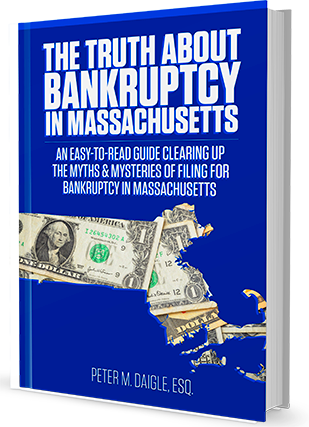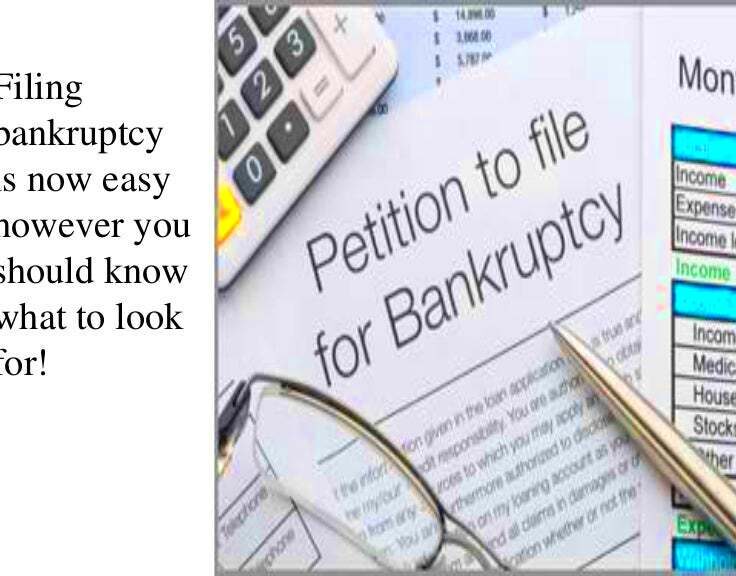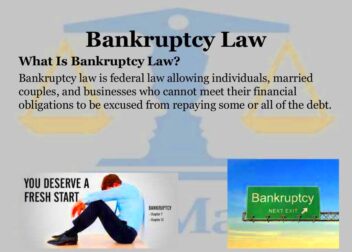Massachusetts Bankruptcy Laws Explained
When it comes to bankruptcy laws Massachusetts aims to support both individuals and businesses in recovering their financial footing when overwhelmed by debt. Having witnessed friends and family go through these tough times I grasp the emotional and practical challenges at play. While Massachusetts adheres to federal bankruptcy laws it also has its own distinct rules and intricacies. Whether you’re burdened by medical expenses, credit card debt or other financial woes understanding the intricacies of Massachusetts bankruptcy laws can offer a lifeline. It’s not merely about terminology; it’s about discovering a new beginning when hope seems out of reach.
Types of Bankruptcy in Massachusetts

In Massachusetts people and companies can choose from various bankruptcy options, tailored to their specific needs. The primary choices are Chapter 7 and Chapter 13 each offering its own set of guidelines and advantages.
- Chapter 7 Bankruptcy: Often referred to as “liquidation bankruptcy,” this type involves selling off non-exempt assets to pay off creditors. It’s usually suited for individuals with limited income who cannot repay their debts. Many personal debts, like credit cards and medical bills, can be discharged under Chapter 7.
- Chapter 13 Bankruptcy: Known as “reorganization bankruptcy,” this type allows individuals to keep their assets while repaying creditors over a three to five-year period through a structured payment plan. It’s ideal for those with a steady income who need to catch up on overdue payments.
Moreover companies have the option to file for Chapter 11 to restructure their debts or Chapter 12 specifically designed for family farmers and fishermen, although these options are not frequently utilized by individuals seeking bankruptcy protection.
Eligibility Criteria for Filing Bankruptcy

Figuring out if you meet the requirements for bankruptcy means looking at certain eligibility rules. Here’s a summary of the key points you should be aware of:
- Chapter 7 Bankruptcy: To qualify, you must pass the means test, which assesses your income against the median income for Massachusetts. If your income is below the median or if you have a significant amount of unsecured debt, you might be eligible.
- Chapter 13 Bankruptcy: Eligibility depends on your income level and the amount of debt you owe. Specifically, you need a regular income and must have unsecured debts below $465,275 and secured debts below $1,395,875 as of 2024. These limits are adjusted periodically.
In both scenarios you cant have had a bankruptcy cleared within the past eight years for Chapter or within the last two years for Chapter Moreover before you file you need to go through counseling with a recognized agency. Its similar to taking a course before embarking on a new phase in your life something I personally found beneficial and eye opening based on my own journey.
Chapter 7 Bankruptcy Process
When it comes to dealing with crushing debt chapter 7 bankruptcy is often viewed as a way to hit the reset button. I can personally relate to the feeling of being overwhelmed by the thought of losing belongings while holding onto the hope of starting anew. Let me walk you through how this journey usually goes.
- Pre-Filing Credit Counseling: Before you can file for Chapter 7, you must complete credit counseling from an approved agency. This step feels a bit like a financial check-up, but it’s crucial for understanding your options and receiving guidance tailored to your situation.
- Filing the Petition: The process begins when you file a bankruptcy petition with the court. This petition includes detailed information about your income, expenses, assets, and debts. Think of it as opening up about your financial life in full, often leading to a mix of relief and nervousness.
- Automatic Stay: Once you file, an automatic stay goes into effect, halting most collection activities. It’s like hitting the pause button on harassing calls and wage garnishments, offering some breathing room as you navigate the process.
- Meeting with the Trustee: You’ll have to attend a meeting with a bankruptcy trustee. This person reviews your case and ensures everything is in order. It’s often straightforward but can be nerve-wracking as you answer questions about your financial situation.
- Asset Liquidation: If you have non-exempt assets, they may be sold to pay creditors. Massachusetts exemptions can protect certain property, but understanding what’s safe can be crucial. The aim here is to clear as much debt as possible while retaining essential items.
- Discharge of Debts: If all goes well, your qualifying debts will be discharged, meaning you’re no longer legally required to pay them. It’s the end of a long journey and the start of rebuilding, filled with mixed emotions of relief and cautious optimism.
Chapter 13 Bankruptcy Process
Chapter 13 bankruptcy is like a plan for people with a regular income who need assistance in handling their debts. In my observation it provides a method to gradually pay off debts making it a saving grace for numerous individuals. Lets break it down step by step.
- Pre-Filing Credit Counseling: Just like with Chapter 7, you’ll need to complete credit counseling before filing. This helps you and your counselor develop a feasible plan for repayment and reassures you that you’re making the right choice.
- Filing the Petition and Repayment Plan: After filing the petition, you submit a detailed repayment plan outlining how you’ll pay off your debts over three to five years. Crafting this plan requires careful budgeting and sometimes feels like walking a tightrope, but it’s crucial for successful completion.
- Automatic Stay: As with Chapter 7, an automatic stay is in place once you file, which stops creditors from pursuing collection actions against you. It provides immediate relief and time to get your plan into motion.
- Meeting with the Trustee: You’ll attend a meeting with the trustee who will review your repayment plan and financial situation. It’s often more collaborative than confrontational, aiming to ensure that your plan is feasible and fair.
- Plan Confirmation: The court must approve your repayment plan. If the court finds it reasonable and in accordance with the law, it will be confirmed. This step is like getting a green light to proceed with your financial recovery.
- Making Payments: You will make regular payments to the trustee, who distributes the funds to your creditors. It’s a structured approach that helps manage debt while you continue working and earning.
- Discharge of Debts: Upon successful completion of your repayment plan, any remaining eligible debts are discharged. This marks the end of the process and the beginning of a new chapter, filled with hope and the promise of financial stability.
Impact of Bankruptcy on Your Credit Score
Declaring bankruptcy can have an impact on your credit score but it’s crucial to see the bigger picture. Speaking from personal experience I’ve come to realize that although bankruptcy may seem like a hurdle at first it can also serve as a stepping stone towards healing and rebuilding.
This is how bankruptcy typically impacts your credit rating.
- Initial Drop: Bankruptcy typically causes a significant drop in your credit score. This is expected as the bankruptcy record can remain on your credit report for up to 10 years for Chapter 7 and 7 years for Chapter 13. The immediate impact can be disheartening, but it’s the first step in a longer recovery process.
- Rebuilding Phase: After the initial drop, the real work begins. Making timely payments on any remaining debts and building positive credit history can gradually improve your score. It’s a bit like starting from scratch, but each small step forward helps in rebuilding your creditworthiness.
- Long-Term Outlook: Over time, the negative effects of bankruptcy diminish, especially if you maintain good financial habits. Many people find that their credit score begins to recover once the bankruptcy is behind them and they’ve demonstrated responsible credit use.
In summary although filing for bankruptcy can affect your credit rating it also presents an opportunity for fresh starts. With actions and a commitment to financial discipline you can gradually rebuild your credit standing and pave the way towards a more secure financial future.
What to Expect After Filing for Bankruptcy
Going through the process of declaring bankruptcy can be quite daunting. However based on my own experience I can assure you that having an understanding of what to expect next can help alleviate some of that unease. After filing your journey doesn’t end there; it’s merely the starting point. Here’s a glimpse of what you can typically anticipate:
- Immediate Relief: One of the first things you’ll notice is the automatic stay going into effect. This legal shield halts most collection actions, including garnishments and creditor calls. It’s a bit like finding a safe haven in the midst of a storm, offering a crucial breathing space.
- Trustee Meetings: You’ll need to attend a meeting with the bankruptcy trustee assigned to your case. This meeting, often referred to as the 341 meeting, is a routine part of the process where the trustee reviews your financial situation. It’s generally straightforward, though it can be nerve-wracking as you answer questions about your finances.
- Managing Your Finances: As you work through your bankruptcy, staying on top of your financial situation is essential. Create a budget, avoid new debts, and start planning for your financial future. It’s a time for careful planning and discipline, much like setting new habits for a healthier lifestyle.
- Completion and Discharge: If you’re successful, your debts will be discharged according to your bankruptcy plan. This is a significant milestone, symbolizing the end of one chapter and the beginning of another. Celebrate this fresh start, but keep in mind that rebuilding is an ongoing process.
In the wake of bankruptcy, it’s all about getting used to the new normal and making changes to move forward. It’s a journey of seeking steadiness and striving for a more stable financial future with a fresh sense of purpose.
Common Mistakes to Avoid When Filing for Bankruptcy
Having witnessed loved ones navigate through bankruptcy, I can offer insights on common missteps that can complicate the process. Steering clear of these errors can ease your path and increase your chances of success. Here are some key pitfalls to be mindful of.
- Hiding Assets: Trying to conceal assets can lead to severe consequences, including dismissal of your case or even legal penalties. It’s essential to be transparent and honest about your financial situation. Think of it as laying all your cards on the table—what you see is what you get.
- Accumulating New Debt: Taking on new debts while your bankruptcy is pending can complicate your case and possibly lead to more financial trouble. It’s like trying to fill a leaky bucket—new debt can undermine your efforts to achieve financial stability.
- Ignoring the Credit Counseling Requirement: Failing to complete the required credit counseling can delay or even derail your bankruptcy case. It’s a necessary step, much like taking a prerequisite course before tackling a more advanced subject.
- Overlooking Financial Planning: Bankruptcy is not just about clearing debt; it’s also about planning for the future. Neglecting to create a post-bankruptcy budget and financial plan can set you up for future difficulties. This period is an opportunity to rebuild, so make the most of it by planning wisely.
- Filing Without Legal Advice: Bankruptcy law can be complex. Trying to navigate it without proper legal guidance can lead to errors and missed opportunities. Seeking help from a qualified bankruptcy attorney can provide clarity and ensure that you’re making informed decisions.
Steering clear of these pitfalls can help you navigate the bankruptcy journey with greater ease and position yourself for a smoother rebound.
Frequently Asked Questions About Massachusetts Bankruptcy Laws
Dealing with bankruptcy can be a bit tricky and it’s totally normal to have questions. From what I’ve seen and experienced, here are some of the inquiries that tend to come up regarding bankruptcy laws in Massachusetts.
- What is the difference between Chapter 7 and Chapter 13 bankruptcy? Chapter 7 involves liquidating assets to pay off debts and is generally suitable for those with limited income. Chapter 13 involves setting up a repayment plan over three to five years and is often chosen by those who can manage a regular income and want to keep their property.
- Will bankruptcy clear all my debts? Not all debts are dischargeable. Commonly excluded debts include student loans, child support, alimony, and certain types of tax debts. It’s important to understand which debts can be discharged and which will remain.
- How long will bankruptcy stay on my credit report? A Chapter 7 bankruptcy will remain on your credit report for up to 10 years, while a Chapter 13 bankruptcy will stay for up to 7 years. The impact on your credit score diminishes over time as you rebuild your financial health.
- Can I keep my home and car during bankruptcy? In many cases, you can keep your home and car, especially if they are exempt under Massachusetts law or if you continue to make payments on them. It’s crucial to understand the exemptions and how they apply to your situation.
- What are the income requirements for filing Chapter 13? To file for Chapter 13, you must have a regular income and your debts must fall below specific limits. As of 2024, unsecured debts should be below $465,275, and secured debts should be below $1,395,875. These limits are updated periodically.
These inquiries capture the main worries individuals face when contemplating bankruptcy. Being equipped with responses can assist you in making choices and approaching the process more assuredly.
Conclusion
Declaring bankruptcy may feel intimidating but keep in mind that it serves as a resource to help you regain control over your financial situation. Based on my personal experiences and observations I’ve witnessed how bankruptcy can mark a turning point providing a way out of crushing debt and an opportunity for a fresh start. Although the process comes with its challenges and adaptations it also paves the way for rebuilding and healing. The crucial factor is to approach it with sincerity, a readiness to learn and a dedication to making improved financial decisions, in the future. With the mindset and support bankruptcy has the potential to lead to a brighter financial tomorrow and restored peace of mind.


